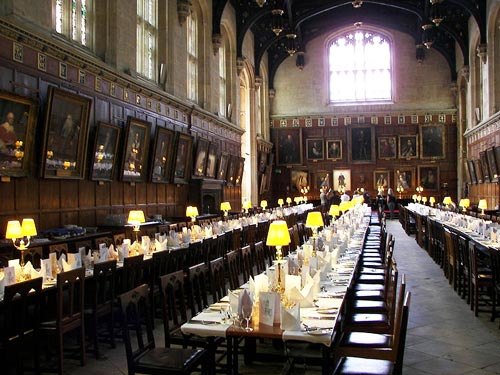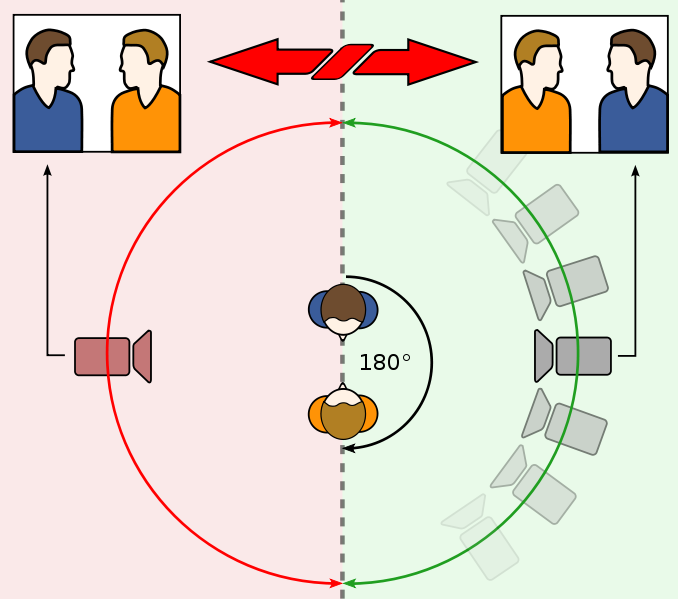Media Studies Foundation Portfolio
Preliminary Exercise in Continuity Editing
Your Task:
THIS TASK CONTRIBUTES TO YOUR COURSEWORK GRADE:
COURSEWORK REPRESENTS 50% OF THE AS LEVEL
The specification states that this must be:
‘ A continuity task involving filming and editing a character opening a door, crossing a room and sitting down in a chair opposite another character with whom she/he then exchanges a couple of lines of dialogue.’ The sequence must last no longer than one minute.
This task should demonstrate:
Match on Action
Shot/Reverse Shot
The 180 degree Rule
All filming and editing must take place on Haywards Heath College campus. You will record your learning and processes on a group blog, which you will continue into the Main Task (the opening of thriller film).
Stages of the Work
You will work on this in all of your Media Studies lessons between Monday December 13th 2010, and Friday January 14th 2011. However, the final deadline for all parts of the work will be one week after on Friday January 21st. (See below for information on what to hand in).
Stage One
You will decide upon your groups. Groups must be a maximum of four students, and a minimum of three. (NB Smaller groups may create a shortage of cameras).
Stage Two
In your groups, you will revise the continuity terms referred to above, and ensure that everyone in the group understands what you are required to demonstrate in the finished product.
Stage Three
You will set up your group’s blog, and begin to make entries on it.
Based on skills demonstrated in the practice work earlier, you will decide which group members are most skilled at camera operation, and assign them the task of filming. At least two people should take responsibility for filming. Assign tasks to everyone in the group from the list below:
Storyboard artist/s (draws storyboard to group’s plans)
Location Scout/s (selects locations and organises to shoot there)
Prop Manager (organises props for shooting)
Casting Director (organises actors where needed)
Director of filming (calls lead in and out to start and end filming)
All members of the group must be involved and present for the edit.
Stage Four
You will all contribute to a planning discussion, in which you create initial ideas. These must include exact location/s to be used (see below), precise decisions about action to be filmed, and continuity methods.
You will then begin the storyboarding process: each shot must be the result of careful discussion and frequent checks that you are meeting the brief. Your storyboard must use the correct format, and include all of the information shown on page 25 of your booklet on Moving Image Language. However, it should also include timing in seconds for each shot, and exact lines of dialogue alongside the shot/s that it would be heard.
Your discussion must include decisions about how you will make sure that you demonstrate the rules of continuity listed above.
GROUPS MUST BLOG THEIR DECISIONS THROUGHOUT.
Stage Five
Check that your locations are available at the times you will be filming, and that no one else is using it at the same time.
Check that props are ready for filming.
Check that actors (either members of the group or others you have invited to take part) are available when you are shooting.
Revise the Health and Safety procedures for filming.
Stage Six
Remind yourselves of the necessary checks (especially white balance and health and safety) you need to do before and during filming, and gather your equipment together:
Camera
Tripod
Dolly?
Tape
Portable lights? (You will not be assessed on your use of lighting at this stage)
Start filming.
You are expected to use three lessons for filming. You will need to be efficient and effective with your use of time (as in the real world), as any delays at this stage will impact on the rest of your work.
Shoot the sequence several times, and from a variety of positions. Make absolutely certain that you have sufficient footage to edit successfully – a shortage of footage very often causes poor productions!! Make sure that you allow plenty of recorded time BEFORE AND AFTER the part of the shot you intend to use. EVERY GROUP MEMBER MUST BE PRESENT AND PARTICIPATE IN THE PROCESS.
GROUPS MUST UPDATE THEIR BLOG AS SHOWN ON THE DEADLINE SHEET. Make sure the ‘rushes’ are on the mac network by the deadline to allow for feedback.
Stage Seven
Edit the sequence using I-movie. This must be done by the deadline you are given. EVERY GROUP MEMBER MUST PARTICIPATE IN THE PROCESS. BURN THE PRODUCT TO A DISC. PRIORITY USE OF THE EDITING SUITE WILL BE GIVEN TO THOSE WITH LESSONS AT THAT TIME.
MEDIA STUDIES PRELIMINARY EXERCISE DEADLINES
EVERY MEMBER OF THE GROUP TAKES RESPONSIBILITY TO MEET THE DEADLINES SET. FAILURE TO MEET THESE DEADLINES BY THE GROUP OR INDIVIDUAL WILL BE TAKEN SERIOUSLY, AND MAY RESULT IN A STUDENT BEING ASKED TO LEAVE THE COURSE.
DEADLINE ONE: END OF YOUR SECOND LESSON OF THE WEEK
WEEK BEGINNING MONDAY 13th DECEMBER 2010 – YOUR DATE:
Show a completed storyboard using storyboard conventions plus timing and dialogue to a teacher.
Record the following on your group’s blog:
Your discussion and decisions, explaining your reasons for elements of the sequence in storyboard form.
Your cast, props you intend to use, and locations
Your timetable for filming
DEADLINE TWO: YOUR SIXTH LESSON IN TOTAL, DURING WEEK BEGINNING MONDAY JANUARY 3RD – YOUR DATE:
Finish filming ‘rushes’ AND log these to the mac network, saving material in the correct folder (consult technicians for advice on this).
Update the blog with decisions, problems and solutions
DEADLINE THREE: 14th JANUARY OR YOUR LAST LESSON THIS WEEK
This will be your last lesson allocated to editing. Any further editing will need to be completed in own time (you will need to book time for this) and completed by the final deadline below at the very latest.
Your group’s blog must be updated.
DEADLINE FOUR: FRIDAY JANUARY 21ST 2010 AT 4.10PM
FINAL DEADLINE:
FINISHED PRODUCT MUST BE BURNED TO DISC
GROUP BLOG MUST BE COMPLETE TO FINAL STAGES
NB AS THIS IS AN EXAMINATION REQUIREMENT, ALL STUDENTS MUST COMPLETE AND PASS THE PRELIMINARY EXERCISE BEFORE BEING ALLOWED TO CONTINUE TO THE MAIN TASK FOR THE FOUNDATION PORTFOLIO. THEREFORE, ANY STUDENT NOT ABLE TO TAKE PART IN THE ABOVE PROCESS TO A SATISFACTORY DEGREE WILL BE ASKED TO INDIVIDUALLY COMPLETE OR SEPARATELY UNDERTAKE THE TASK AS A MATTER OF PRIORITY ON THEIR RETURN TO COLLEGE.

























